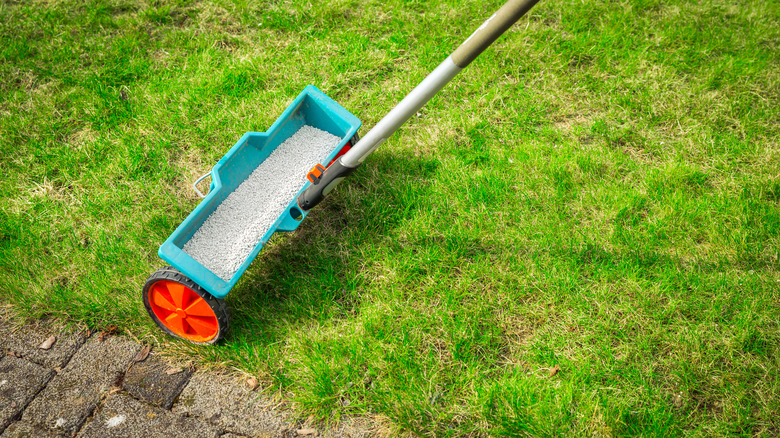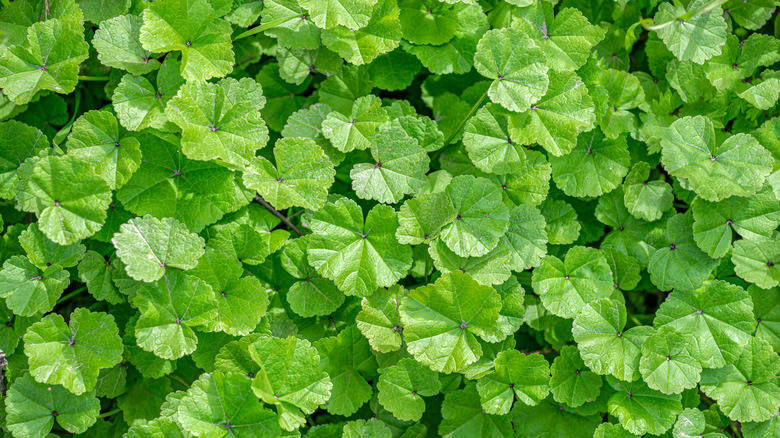As you are trying to grow a lawn that’ll be the envy of the neighborhood, combating weeds may become your primary focus. Although you may encounter several different types of weeds growing in your lawn, common mallow is one of the most challenging to deal with. Its long, woody taproot makes it difficult to pull, so you don’t want to put off trying to eliminate this weed until it becomes large enough to cause a problem. The best option for controlling common mallow is to pull these weeds when they’re young and before the taproot becomes long and difficult to remove. Additionally, the stronger you make your grass plants, the tougher it will be for the common mallow plants to gain a foothold, as the strong grass plants can choke it out, not allowing it to become large.
Another problem with common mallow is how easily it can spread along the surface of the ground. If your lawn abuts a natural meadow or a garden area with various plants, it’s possible that the common mallow can spread into your lawn quickly. This is especially problematic when you are trying to establish a new lawn.
If you are seeing mallow in areas near the lawn that you are trying to establish, you can attempt to control this weed before it tries to spread. Use a hoe to cut down the weed, then apply a layer of mulch a few inches thick to block sunlight.
Can you treat common mallow with a weed killer or with a weed and feed application?

The toughest part of controlling mallow with a herbicide is that these chemicals tend to work best before it germinates. It’s difficult to predict exactly when the germination of common mallow will occur. What you may find is that you have to perform multiple weed and feed applications to fully control this plant. Additionally, you should use a product with a 2,4-D herbicide, also called 2,4-Dichlorophenoxyacetic acid. This herbicide tends to work better on young common mallow plants. Try to use 2,4-D in limited quantities because it works to kill multiple types of broadleaves, including those you may not want to kill.
Unfortunately, you cannot use glyphosate on common mallow, as it is ineffective. Then again, glyphosate is one of the most effective herbicides on all kinds of plants, including grass, so you may not want to use it around your lawn.
Another reason people may not choose to spray this weed is because it is considered one of the most popular weeds that are actually good to grow. Some people eat mallow, as its leaves contain vitamins and antioxidants. Its seeds are edible as well. Also, you can pickle the flowers. Consequently, you may want to keep poison away. Of course, if you’re attempting to eradicate it from your lawn, it’s unlikely that you will be eating it, so using a weed and feed application shouldn’t be problematic.
How to recognize when you have a problem with common mallow

Nearly any homeowner in the United States may see common mallow in their lawns, as it grows almost anywhere. Typically, this weed is an annual broadleaf weed. However, under the right circumstances, it can become a perennial, coming back year after year. This clearly is not what you want to see in your lawn.
If you are unsure whether what you are seeing is common mallow, look for a primarily round leaf with five lobes at the end of a stalk. Its leaves can also be kidney-shaped and have up to nine lobes. It typically grows close to the ground but can reach a height starting at about four inches. It can be as tall as a couple of feet if left to grow. If you are familiar with geranium plants that you may grow in your garden or in a pot, the leaves on the common mallow will resemble geranium leaves.
Mallow’s seed pods resemble wheels of cheese. Unfortunately, the seeds of the common mallow can live in the soil for decades and still sprout at some point in the future. It also has tiny white flowers with a funnel shape at certain times of the year that almost look like mini marshmallows. It’s also possible for these weeds to have purple or pink flowers that are a bit larger with some white on them.



